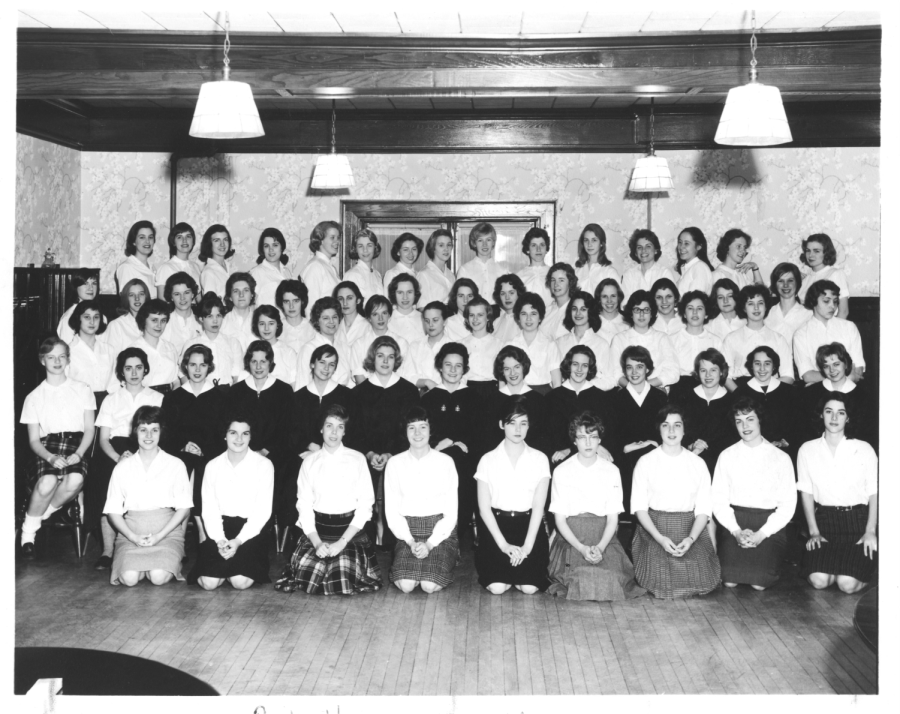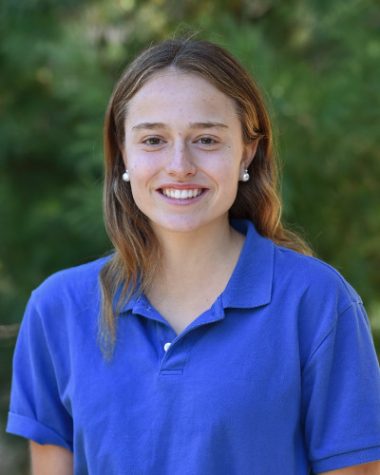My Grandmother’s College Experience: A Lot Has Changed in 60 Years
April 4, 2022
As Women’s History Month comes to a finale, I want to spotlight two remarkable women in my life: my grandmothers, Elaine Camerota and Karen Lewis. Their bravery and drive pushed them into the college arena, opening up more opportunities and freedoms for countless women today.
In the 1950s, society held a traditional and rigid view of the role of women. The narrow definition of femininity marked women as mothers and homemakers. Women who enrolled in higher education were often expected to use their time in school to improve their domestic skills and find husbands – “seeking an M.R.S. degree” was the popular expression.
In this time period, only 7.3% of American men and 5.2% of American women attended college, according to Statista. Despite societal pressures to lead a largely domestic life, my grandmothers were not deterred. They loved to learn and had a different image of where they would be after school. Therefore, they tackled advanced schooling to enter their desired fields after college.
Elaine attended the University of Pennsylvania from 1957 to 1961. At the time, Penn barred women from many areas. Elaine remembers that female English teachers could not receive tenure, the student center – Houston Hall – only allowed boys, and some classes were open to males only.
In Elaine’s Introduction to Economics class, her male professor – in an attempt to be funny – said that “learning economics will help you learn the value of engagement rings.” The professor’s comment was a microcosm of society’s desire to keep women in the domestic sphere. Throughout college, my grandma noticed a common trend with her female peers: “Women found a boyfriend in college, got married, worked while pregnant to put their husbands through graduate school, and then stayed home to raise their kids.”
Elaine graduated in 1961 with a Bachelor of Arts in English. The following year, Elaine received her Master of Arts in English and American literature, also at Penn.
In the last 60 years, Penn has developed a more progressive lens with regard to creating a comfortable space for women. In 1973, the feminist community at Penn protested for better safety and support measures on campus. Specifically, rape counselors, alarms in restrooms, a shuttle service, extra lighting, and self-defense classes. In response, Penn instituted a Women’s Center (PWC) that year. The PWC continues to serve as a resource for survivors of sexual and gender-based violence.
The PWC director Felicity Pacton said, “I want this to be a place that celebrates women and the broader sense of what it takes to be a woman – not just the problems that come along with it.”
Less than 250 miles away, my grandmother Karen began her journey on the college track at Smith. Smith College is a same-sex liberal arts school in Northampton, Massachusetts. Since its founding in 1871, Smith sought to demonstrate that women are as capable as men of achieving intellectual success. According to Karen, Smith “really valued women having a good education.”
Karen got her first taste of independence and adulthood in her freshman year. While she was a little “frightened” and “nervous” about this new chapter, Karen soon fell in love with the college and the freedom it offered. She lived in a small dorm with 12 other girls. They would walk to the main dining hall for all three meals. The school also assigned a “big sister” or mentor for Karen, and thus Karen had a built-in friendly peer to “bounce questions off of.” The school’s positive atmosphere encouraged Karen and her close friend to try out for the chorus. To Karen’s surprise, she not only loved the singing group, but she met her future husband at the Chorus Candle Ceremony a couple of years later.
However, even same-sex institutions were not immune to societal pressures. Karen said that a mix of girls either graduated or dropped out and “got married before school was over.” But not my grandma!
In 1963, Karen graduated with a Bachelor of Arts in American Studies and a focus on history. She went on to Yale and got a Master of Arts in teaching.
More and more women have followed in my grandmother’s footsteps. In the 1960s and 1970s, second-wave feminism produced shifts in both cultural perceptions of women’s roles and higher education. Today, norms are nearly the reverse of those in place when my grandmother went to college. At many coed universities, women increasingly outpace men in graduation and enrollment rates. By the end of the 2020-2021 academic year, women accounted for nearly 60% of all college students.
I admire Elaine and Karen for their dedication and pursuit of higher education despite gender barriers. Talking with my grandparents about their experience widened my perspective on the college application process. While junior year can be stressful and anxiety-provoking, I am grateful for the vast array of colleges available to me – each school committed to preparing me for the bustling world ahead.
I hope that St. Luke’s students can also celebrate past generations for their resilience and appreciate the bountiful opportunities within reach today.




